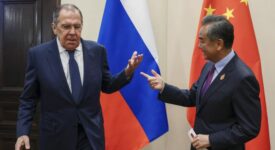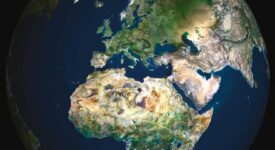The beginning of December was marked by the multilateral signature of the world trade treaty, which has been already described as “historic”. The agreement, which the World Trade Organization (WTO) was waiting for since its establishment in 1995, hopes to reduce trade barriers, simplify customs procedures, and – likely most importantly – unite the world under a WTO umbrella. It is estimated that the deal could contribute 1 trillion USD to the global economy, and create more than 20 million jobs, mostly in developing countries. Bali, where the meeting of the entire WTO membership gathered, was therefore not a random selection of a venue.
Many of the major objectives of the landmark Bali WTO agreement do deal with developing countries. The agreement seeks to provide low- and middle-income economies with greater access to the world market including advanced Western economies while handling the issue of food subsidies. This time though, developing countries did not want to get disappointed as in the previous WTO rounds that promised more than they could have ever fulfilled. The last Doha Development Round, which commenced in 2001, also aimed to lift trade barriers and increase the volume of the trade in the direction South-West. Yet, the negotiations collapsed in Geneva 2008 on the issue of agricultural subsidies between the United States, China, and India – the very same thing that was threatening the success of Bali Package this year. In fact, the Bali agreement contains basically the entire program of the unsuccessful Doha round, and it might well carry its stigma.
Agriculture was not the only point of discontent during the “Doha decade”. Access to patented drugs including the revision of the Trade-Related Aspects of Intellectual Property Rights (TRIPS) in favor of poor countries, for which most of patented medicine from the West is too expensive, proved to be the key problem. Yet, another development topic concerned special and differential treatment of low income countries on which eventually talks split. Moreover, developing countries also complained that they had had problems with implementation issues already following the Uruguay Round, which had taken place before Doha.
Although only few believe that the world trade geography is not skewed in favor of developed countries, this round may well exhibit more potential than whatever WTO talks before. This time developing countries stood up. In fact, the “historic” Bali trade agreement almost fell apart due to the unwillingness of some emerging and developing countries to do as told. For instance, until the very last day of the negotiations, four Latin American countries had been unwilling to sign the agreement that would not lift the trade embargo with Cuba. India, in contrast, could not for long find a common ground on grain subsidies with the United States, while Cuba was threatening to veto the entire package of measures that had been agreed on before.
Covering some of the major areas of interest for developing countries including cotton and food security, the Bali agreement seems to attain its potential in development because in this round, the world is dealing with much more than a bunch of impoverished countries. India, which insisted on the permission to buy staple from its own farmers at the prices higher than the market prices, was in the end “pacified” by its developing neighbors, such as Pakistan or Thailand which claimed that such subsidizing would hurt their own farmers. Even though the United States came to support the anti-Indian-subsidy alliance, New Delhi’s insistence on the protection of its agriculture was crowned by the status-quo of the system of subsidies in favor of India by 2017.
Developing countries might still have a long way to go to reach the world trade they would wish. Yet, something happened in Bali that gives more hope to the Third World than anti-globalization activists would like to admit. The world might be still skewed towards Western countries, but the trade distribution is changing at its own steady pace. Moreover, whether opponents like it or not, the WTO still remains to be the only platform designed by the West, in which developing countries have an equal say on whatever the agenda is.
Article Tags:
Bali · China · Cuba · Delhi · Doha · Geneva · India · Pakistan · Thailand · TRIPS · US · WTOArticle Categories:
ECONOMY & TRADE






